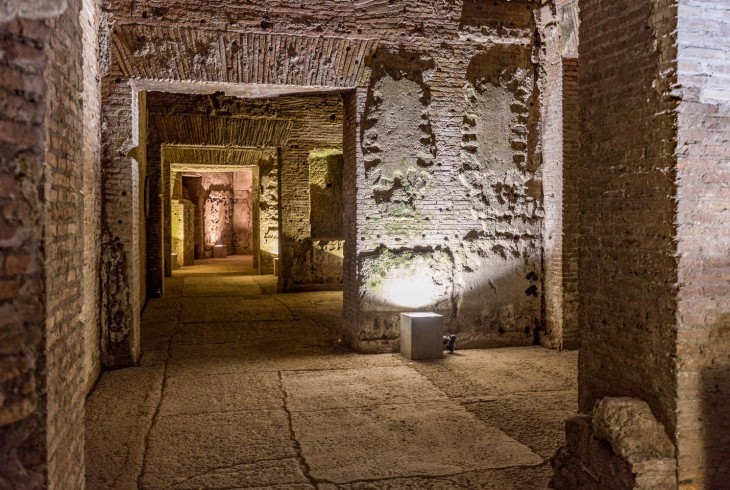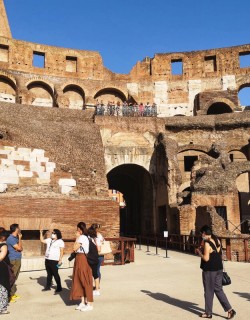Newly updated 3 March 2025
One fateful day in the 15th century, a young Roman out for a walk took a false step - and fell through time. Crashing through the earth on the Esquiline Hill, he tumbled into a vast, hidden world: a cavernous space covered in dazzling frescoes, glowing in the dim light. He had no way of knowing it, but he had just rediscovered the lost palace of an emperor: the fabled Golden House of Nero, buried in the Roman soil for over a millennium.
Word of this astonishing find spread like wildfire, drawing Renaissance artists, scholars, and noblemen alike who risked life and limb to descend into the darkness and witness its wonders.
Thankfully, these days you don’t need ropes or daring to explore this forgotten masterpiece. Today it's possible to visit Nero’s Golden House on special guided tours, and it's one of our absolute favorite things to do when in Rome. But despite its beauty, the Domus Aurea still flies under the radar for many travelers. If you’re looking for a true hidden gem in the Eternal City, then this is it!
Discover everything you need to know about the Domus Aurea, from what to see and how to visit, with our in-depth guide.
What is the Domus Aurea?
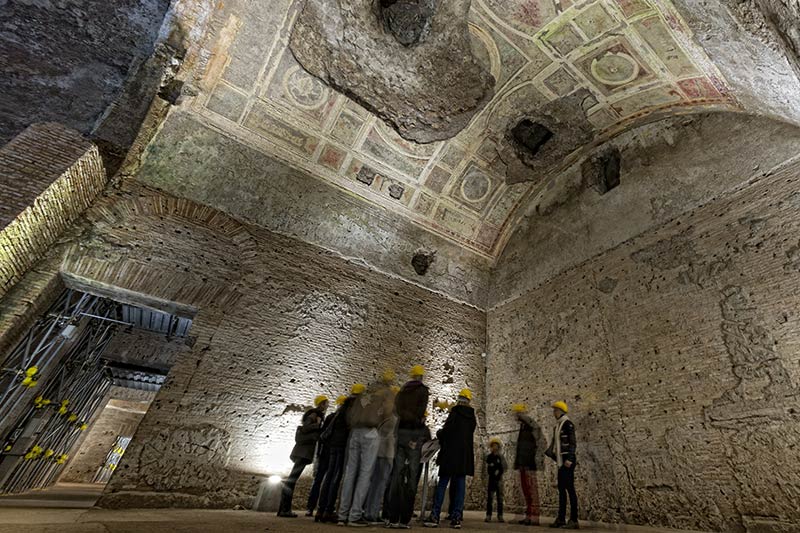
Let’s begin with the basics. The Domus Aurea (which means “Golden House” in Latin) was the most opulent palace in Ancient Rome built by the notorious emperor Nero. Nero had extravagant tastes, and he took advantage of a devastating fire in 64 AD which had destroyed many buildings in the centre of Rome to construct a vast Imperial palace over the ruins.
You would expect the palace of an emperor to be luxurious, but even by the standards of Roman emperors, the Domus Aurea was excessive. The palace and its gardens extended over a mind-boggling scale - by some estimates covering an area of up to 300 acres.
There were over 300 rooms in the Domus Aurea, but few bedrooms, so it’s not certain that Nero ever slept in the palace. Instead, the Domus Aurea was designed primarily for entertainment purposes: Nero’s decadent parties were legendary, though not always for the right reasons. Legend has it that during one barn-burning jamboree a particularly unfortunate guest was asphyxiated by clouds of rose petals falling from the ceiling!
Nero entrusted the project of his Golden House to the renowned architects Severus and Celer, while the decorations were created by the painter Famulus. The works were completed at an incredible speed, with most of the construction being finalised in just 4 years. Pretty amazing without modern technology.
Read more about the history of the Domus Aurea here.
Why is it called the Golden House?
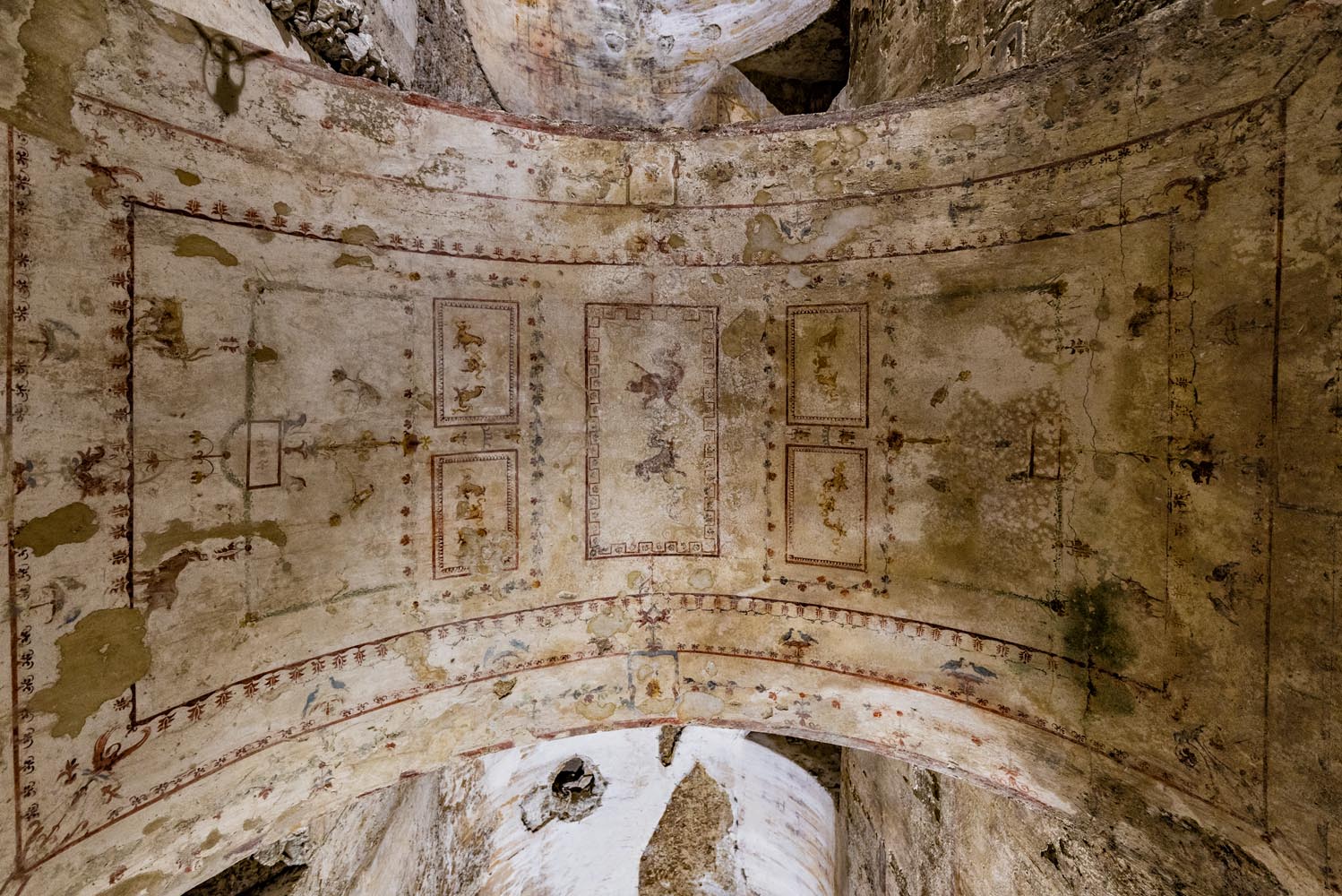
The Latin name for Nero’s Palace is the Domus Aurea, meaning ‘Golden House’, and it owes its grand moniker to the caliber of its ancient decorations. The building was lavishly ornamented with gold leaf, semi-precious stones and frescoes that shimmered magnificently in the Roman sunlight.
According to the ancient writer Suetonius, when the construction work was finally nearing completion, Nero’s only comment was that he was at last beginning to be housed like a human being. Nero, of course, was no ordinary human being.
What to see at the Domus Aurea
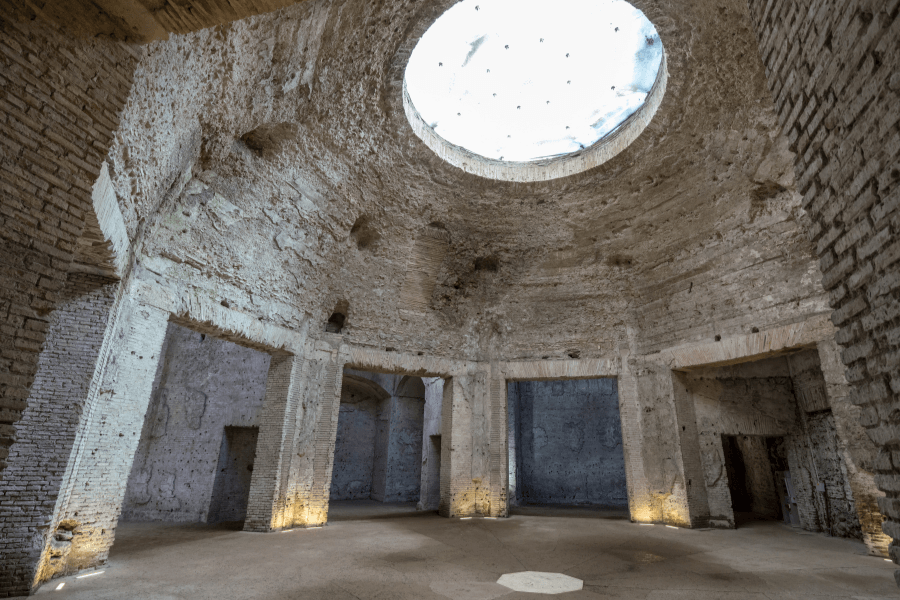
There are many incredible sights to look out for on a tour of the Domus Aurea. These are just some of the highlights.
- The Octagonal Hall
This amazing octagonal room is the architectural highlight of Nero’s palace. The ceiling is pierced by a central oculus that would have revealed the starry night sky to Nero’s dining guests as they reclined on couches during the emperor’s legendary banquets. Amazingly, ancient sources recount that the dining hall rotated continuously, offering an extraordinary viewpoint to its occupants. The oculus of this incredibly ambitious structure proved higly influential, and inspired the design of the Pantheon a few decades later.
- The Room of Achilles and Skyros
The Room of Achilles and Skyros features some of the finest ornamentation in the Domus Aurea, a superb testament to the skill of the painter Famulus. The room is named after a fresco depicting the legendary moment when Achilles, disguised as a woman, is discovered among the daughters of King Lycomedes on the island of Skyros. The walls and ceiling are adorned with the remains of intricate frescoes featuring delicate grotesque patterns and mythological figures - a far cry from the stereotype of restrained classical aesthetics.
- The Nymphaeum of Odysseus
This recently restored chamber is adorned with intricate decorations, including seashell-covered vaults and delicate mosaics, creating a shimmering, grotto-like effect that once reflected the play of light and water brought here by innumerable fountains. Nymphaea (plural for Nymphaeum) were commonly found in elite Roman architecture, often serving as spaces of relaxation and contemplation, evoking mythological grottos dedicated to water nymphs. At the heart of the Nymphaeum is a remarkable mosaic illustrating a scene from Homer’s Odyssey, where the ancient hero encounters the cyclops Polyphemus.
- Renaissance Graffiti
When the Domus Aurea was rediscovered in the 15th century, artists including Raphael braved the dark tunnels to sketch the frescoes they found there, changing our understanding of ancient art forever. Painters such as Pinturicchio, Filippino Lippi and Giovanni da Udine left behind signatures and graffiti, which can still be seen today if you look carefully!
- The Pentagonal Courtyard
The Pentagonal Courtyard was a huge, architecturally sophisticated courtyard that served as one of the palace’s grand outdoor spaces. Once adorned with lush gardens, fountains, and colonnades, this served as a grand entrance to the palace and is fascinatingly recreated thanks to virtual reality. Nearby, the so-called Hall with the Gilded Vault features superb stucco decorations.
What happened to the Golden House after Nero’s Death?
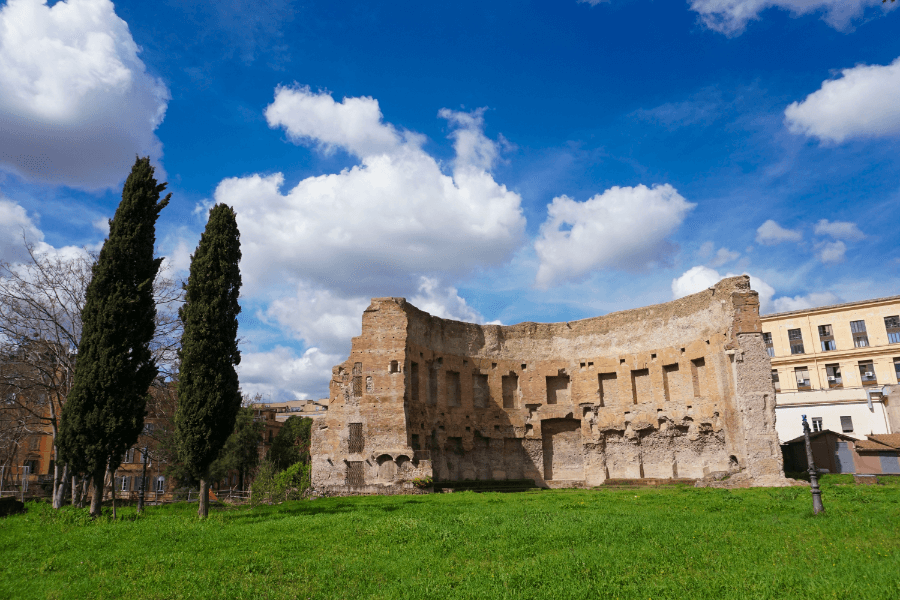
Nero didn’t get to enjoy the luxuries of the Domus Aurea for very long. The emperor’s many crimes and excesses eventually caught up with him, and as his enemies closed in he was forced to commit suicide in 68 AD. Within forty years this magnificent palace had all but disappeared.
After Nero’s death, his once-glorious Domus Aurea quickly fell out of favor. Seen as a symbol of extravagance and tyranny, its vast gardens were reclaimed for public use under the rule of Emperor Vespasian. The artificial lake at the heart of the palace complex was drained and, within a decade, transformed into a massive amphitheater - the Colosseum - where Romans gathered to watch thrilling gladiatorial contests.
Under the Emperor Trajan, efforts to erase Nero’s legacy continued as the Domus Aurea was deliberately buried beneath the foundations of a grand new bath complex - whose ruins you can still see dotted around the Colle Oppio today. Once a dazzling palace of light and splendor, Nero’s golden house was consigned to darkness, its memory fading until Renaissance artists rediscovered its hidden wonders centuries later.
Read more about the Renaissance rediscovery of Nero’s Golden House here.
What are the opening hours of Nero’s Golden House?
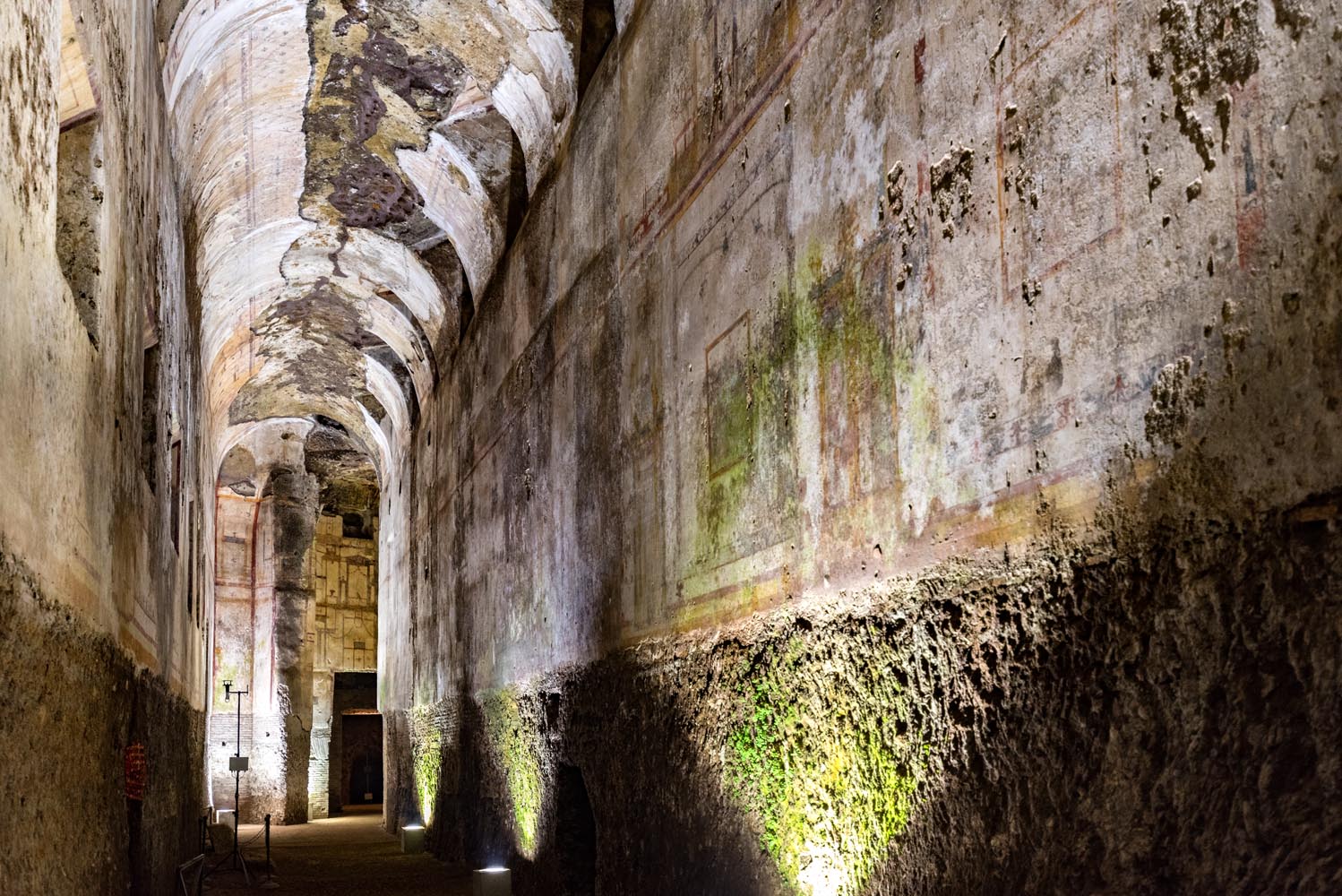
Because the Domus Aurea is an active archaeological site, the excavations are open to the public for guided tours only on weekends, from Friday to Sunday, from 9am to 5pm. Time slots are available to book every 15 minutes, with the last entry at 3.45pm.
The rest of the week sees archaeologists and other experts continuing the research that has already brought so much fascinating information to light.
Do I need to buy tickets to Nero’s Golden house in advance?

It’s highly advisable. As the opening of the Domus Aurea is limited to three days per week, tickets usually sell out very quickly, especially in high season. That’s why it’s essential that you book well in advance to avoid disappointment - or join a special guided tour (see below).
Is it worth taking a tour of the Domus Aurea?
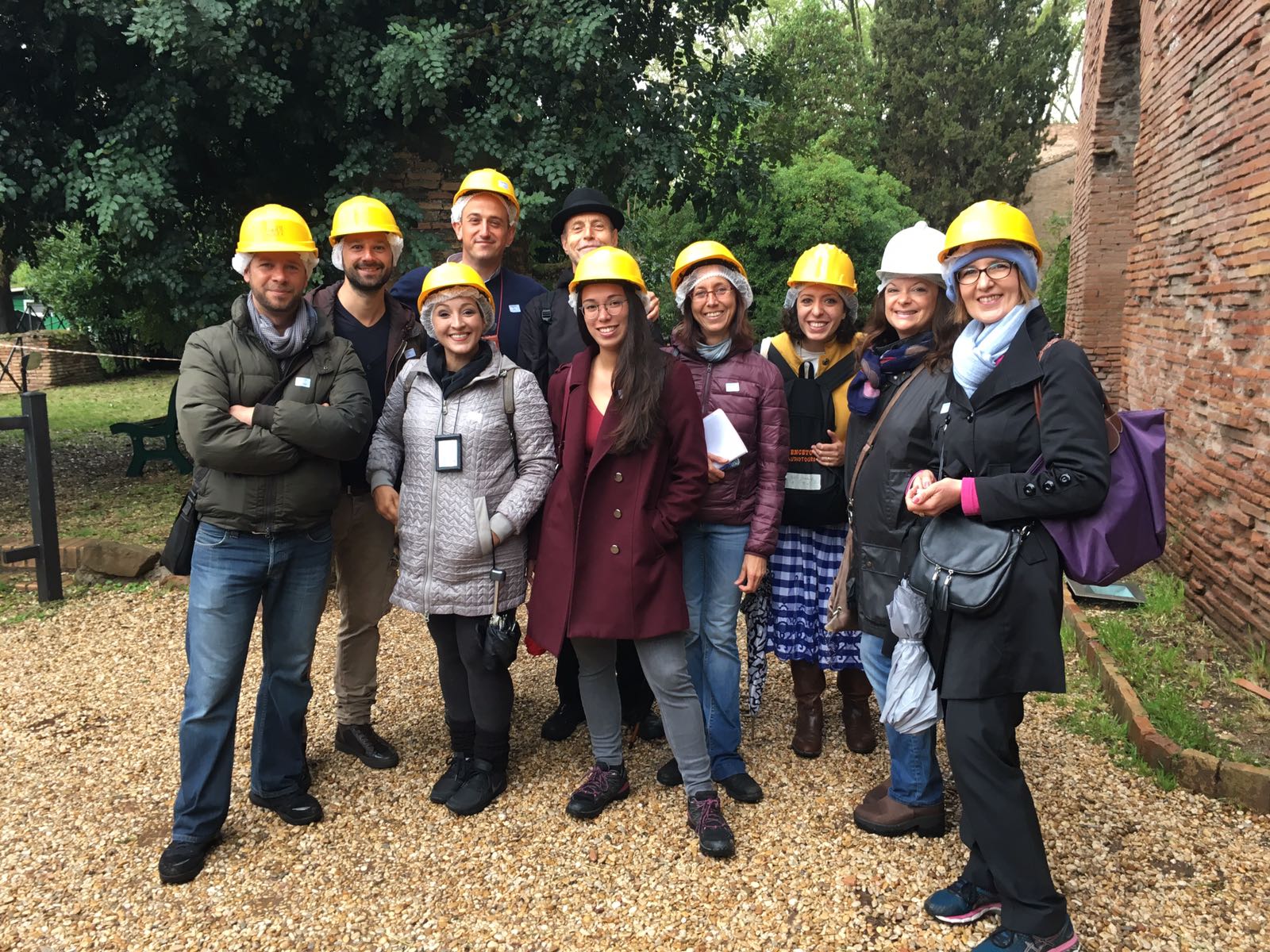
As this is an active archaeological dig, generally the only way to visit Nero’s Golden House is on a tour with an accredited guide. The on-site guides are usually good, with a working knowledge of the excavations. Tours are offered in English, Italian and Spanish.
Tickets sell out very quickly, so it can be a good idea to reserve your entry instead as part of an itinerary offered by an accredited tour operator. Through Eternity’s excellent Domus Aurea tour includes entrance to Nero’s Golden House in the company of an expert English-speaking guide. This is a great way to take the hassle out of organizing your visit.
Virtual Reality at Nero’s Golden House
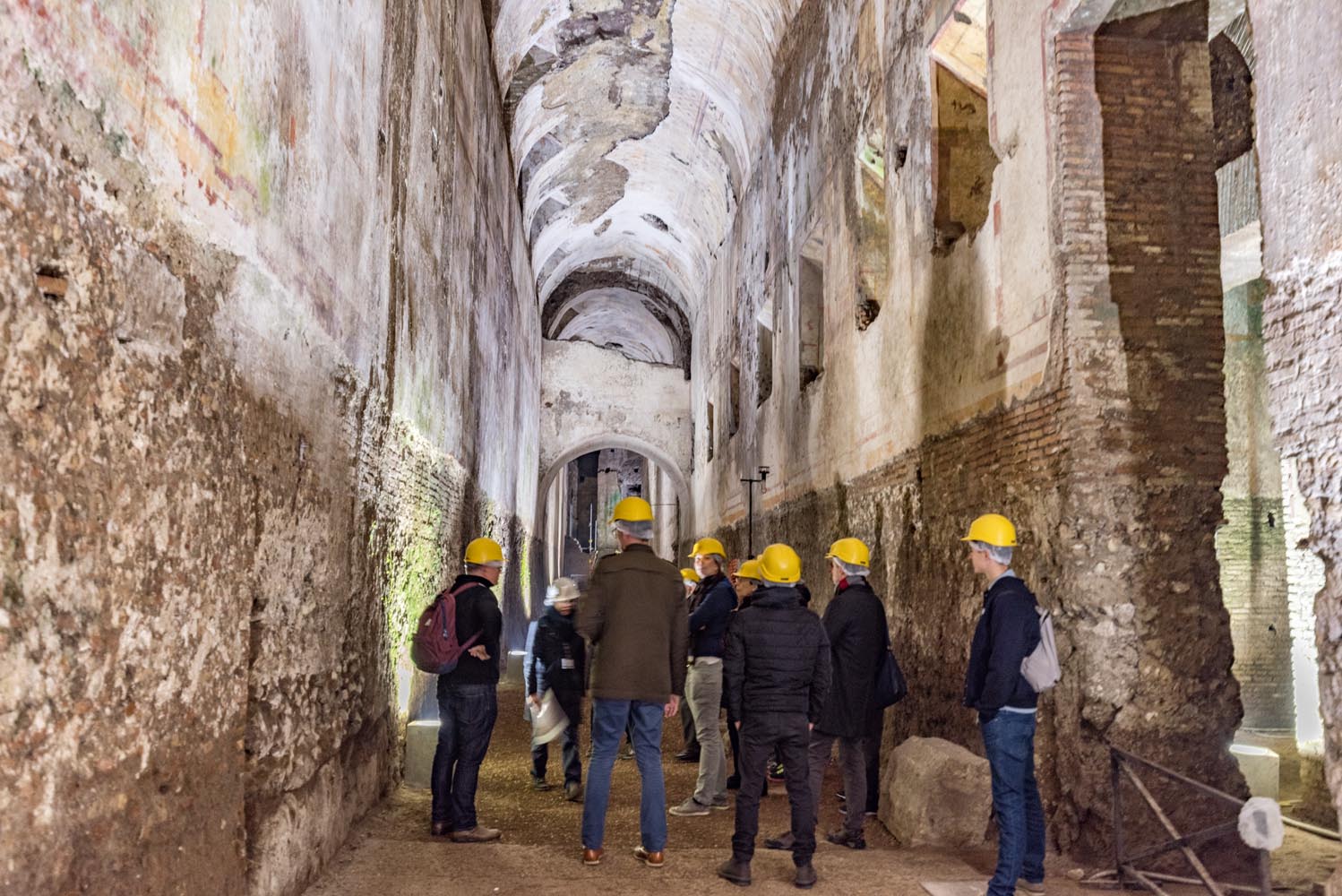
Perhaps the most memorable aspect of visiting the Domus Aurea is the state of the art virtual reality that bring the ruins dramatically to life. During your visit you’ll get to don VR goggles which reveal digital reconstructions of grand arcades, lavish halls and tinkling fountains bathed in golden light.
Fragmented frescoes are restored to their full splendor. Thanks to the wonders of modern technology, we can experience Nero’s palace just as the emperor and his privileged guests once did - an opulent vision of imperial extravagance. We highly recommend choosing this option instead of the regular ticket.
How much do tickets to the Domus Aurea cost?
- The standard ticket including a guided visit and virtual reality reconstructions cost €26.
How to get to the Domus Aurea
The Domus Aurea is located inside the park of the Colle Oppio. The nearest entrance is on Via Labicana. It’s within easy walking distance of most places in central Rome. Alternatively make use of public transport:
- Metro: Line B stop Colosseo. From Piazza del Colosseo, just walk up the hill behind you and through the gates of the Colle Oppio park.
- Bus: Routes 51, 85 and 87 all stop nearby.
- Tram: The number 3 tram stops outside the park entrance on Via Labicana.
We hope you enjoyed learning about the fascinating history of Nero’s Golden House, a monument that captures the ambition, extravagance, and ultimate downfall of Rome’s most infamous emperor. You can visit the remains of the Domus Aurea yourself on a special guided tour: stepping inside its surviving halls still offers a glimpse into a world of unimaginable luxury. To truly bring its story to life, book a place on our Nero's Golden House Itinerary today!
MORE GREAT CONTENT FROM THE BLOG:
- A History of Nero's Golden House
- The Renaissance Rediscovery of the Domus Aurea
- How to Visit the Colosseum in 2025
- A History of the Colosseum
- 5 Fascinating Facts About the Colosseum's Arena Floor
- The Colosseum Underground: The Deadliest Show on Earth
- Wild Animals in the Colosseum
- Where to Stay in Rome in 2025: Areas and Hotels Guide
